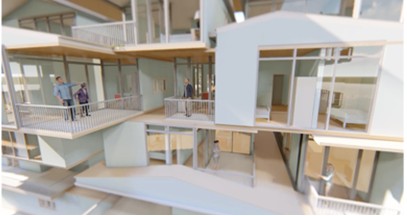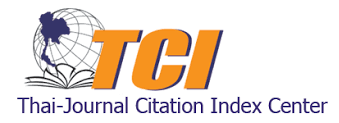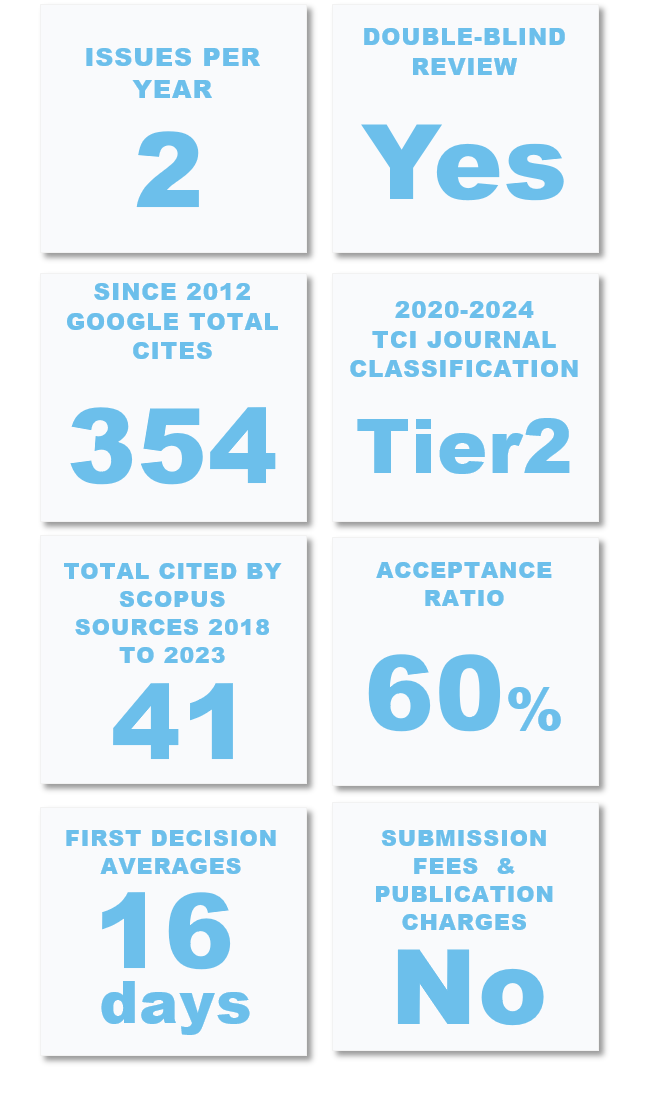Supporting Active Aging through Value-Driven Accommodation Types for Bangkok’s Self-Reliant Elderly
DOI:
https://doi.org/10.56261/built.v22.255688Keywords:
Pensioner, active aging, residential community for pensioners, affordable housingAbstract
As Thailand approaches "Super-Aged Society" status by 2031, addressing the housing needs of self-reliant pensioners has become crucial to supporting independence and quality of life for the aging population. This study examines accommodation models that support active aging, allowing retirees in Bangkok to maintain autonomy, well-being, and social engagement. Through focus groups with near-retirement individuals, key concerns such as accessibility, environmental safety, space utilization, and affordability were identified, emphasizing the importance of housing options that meet diverse income levels and lifestyle preferences. Based on these insights, three housing models; Detached/Semi-Detached Homes, Apartments/Condominiums, and Lodges, are proposed to address the varied needs of elderly residents across four essential dimensions: functional, emotional, life-changing, and social impact. Each model provides practical amenities, community integration, and supportive environments that foster active aging and enhance quality of life. By aligning housing features with the Elements of Value Pyramid, this study assesses the feasibility and impact of each model, with measurable outcomes such as resident satisfaction, social engagement, and accessibility. This research contributes to the development of sustainable, age-friendly accommodations that holistically address the functional, emotional, life-changing, and social needs of Thailand’s elderly population.
Downloads
References
Alberta Seniors and Community Supports. (2006). Accommodation standards. https://open.alberta.ca/dataset/024a4f79-1c41-4a13-a10a-2d4074cdd342/resource/8f728dae-559d-4715-a58e-923b4fd02ab5/download/153643.pdf.
Bloom, D. E., Boersch-Supan, A., McGee, P., & Seike, A. (2011). Population aging: Facts, challenges, and responses. http://www.hsph.harvard.edu/pgda/working.htm.
Division of Elderly Potential Promotion, Group for Enhancing and Developing the Potential of Elderly Networks. (2021). The current elderly society and the economy in Thailand. https://www.dop.go.th/th/know/15/926.
Eric, A., John, S., & Nicolas, B. (2016). Spotlight on consumer insight: The elements of value. Harvard Business Review. https://ellisonchair.tamu.edu/files/2020/06/The-Elements-of-Consumer-Value.pdf.
Foundation of Thai Gerontology Research and Development Institute. (2019). The situation of the Thai elderly 2018. Retrieved from https://www.dop.go.th.
Huber, B. (2005). Implementing the Madrid plan of action on ageing. www.un.org/en/development/desa/population/publications/pdf/ageing/egm-mex-dspd.pdf.
Ingersoll-Dayton, B., Saengtienchai, C., Kespichayawattana, J., & Aungsuroch, Y. (2001). Psychological well-being Asian style: The perspective of Thai elders. Journal of Cross-Cultural Gerontology, 16(4), 283–302. https://doi.org/10.1023/A:1011984017317.
Jacqueline Kerr, Dori Rosenberg and Lawrence Frank. (2012). The Role of the Built Environment inHealthy Aging: Community Design,Physical Activity, and Health amongOlder Adults. Journal of Planning Literature, 27(1), https://doi.org/10.1177/0885412211415283.
Kasikorn Research Center. (2021). Sangkhom sūngʻāyu . . . bǣp sombūn khon Thai phrō̜m lǣo rư̄ yang ? [Are Thai people ready for a completely aged society?]. https://www.kasikornresearch.com/th/analysis/k-social-media/Pages/Aging-society-FB-30-04-21.aspx.
Knodel, J., & Saengtienchai, C. (2005). Rural parents with urban children: Social and economic implications of migration on the rural elderly in Thailand. Population, Space and Place, 11(3), 173–188. https://doi.org/10.1002/psp.364.
Koerniawan, M. D., & Gao, W. (2016). Investigation and evaluation of thermal comfort and walking comfort in hot-humid climate: Case study: The open spaces of mega Kuningan-Superblock in Jakarta. International Journal of Building, Urban, Interior and Landscape Technology (BUILT), 6(July), 53-72.
KPMG in Thailand. (2019). Aged care technology Industry focus : Moving towards an aged society. https://assets.kpmg.com/content/dam/kpmg/th/pdf/2019/04/eec-igh-aged-care-technology.pdf.
Mnea, A., & Zairul, M. (2023). Evaluating the impact of housing interior design on elderly independence and activity: A thematic review. Buildings, 13(4), 1099. https://doi.org/10.3390/buildings13041099.
Mo, K. H., Lei, D., Woo, J., & Ko, R. (2023). Housing preference for ageing-in-place: Are there differences among emerging-old, young-old, and old-old adults living in Hong Kong’s private housing estates? Journal of Aging and Environment. https://doi.org/10.1080/26892618.2023.2291762.
National Statistical Office. (2018). Survey of the older persons in Thailand. https://www.nso.go.th.
NESDC warns that a rapidly aging society is likely to hit the economy. (2022, March 21). Bangkok Post. https://www.bangkokpost.com/business/nesdc-warns-rapidly-ageing-society-likely-to-hit-economy.
Prasartkul, P., & Vapattanawong, P. (2007). The situation of Thai elderly 2007. Institute for Population and Social Research, Mahidol University. https://www.ipsr.mahidol.ac.th.
Retirement homes: A new lifestyle for the aging society in Thailand. (2023, July 10). Sawasdee Thailand. https://www.thailand.go.th/issue-focus-detail/010_001.
Sudprasert, S. (2020). Study of thermal comfort and the adaptive behaviors of the elderly in naturally ventilated houses. International Journal of Building, Urban, Interior and Landscape Technology (BUILT), 16, 73–82.
Supawadee B & Terdpong B. (2022). Residential care community for pensioners to encourage active aging society (Research report). King Mongkut's University of Technology Thonburi.
Surakul, J. (1991). Gerontology. Department of Non-Formal Education, Faculty of Education, Chulalongkorn University.
Thailand Development Research Institute. (2023). TDRI Quarterly Review, 38(3). https://tdri.or.th/wp-content/uploads/2023/12/Volume-38-Number-3-September-2023.pdf.
Thailand's population ages like fine wine, marking a global trend. (2024, June 5). Thaiger. https://thethaiger.com/business-news/thailands-population-ages-like-fine-wine-marking-a-global-trend.
Thailand is preparing to become a super-aged society. (2020, September 12). ThaiResidents. https://thairesidents.com/lifestyle/thailand-is-preparing-for-becoming-a-super-aged-society.
Thanakwang, K., & Soonthorndhada, K. (2006). Attributes, functional abilities, and health status influencing life satisfaction among older people in Thailand. Journal of Transcultural Nursing, 17(4), 300–307. https://doi.org/10.1177/1043659606291544.
Thongkamrod, R. (2002). Self-care for mental health: Depression in the elderly. https://www.stou.ac.th/stoukc/elder/main1_8.html.
World Health Organization. (2002a). Active aging: A policy framework. https://extranet.who.int/agefriendlyworld/wp-content/uploads/2014/06/WHO-Active-Ageing-Framework.pdf.
World Health Organization. (2002b). For the MDS project, the proposed working definition of an older person in Africa. http://www.who.int/healthinfo/survey/ageingdefnoder/en/index.html.

Downloads
Published
How to Cite
Issue
Section
License
Copyright (c) 2024 International Journal of Building, Urban, Interior and Landscape Technology (BUILT)

This work is licensed under a Creative Commons Attribution-NonCommercial-NoDerivatives 4.0 International License.











